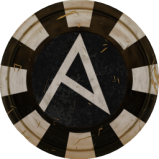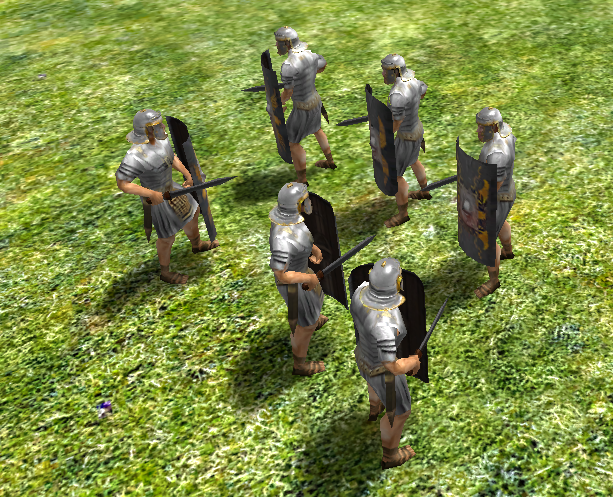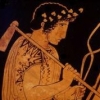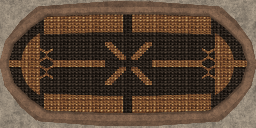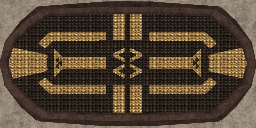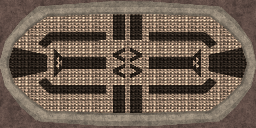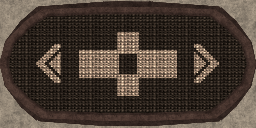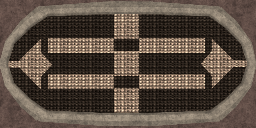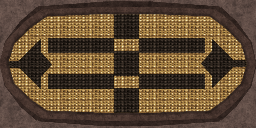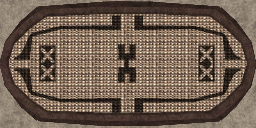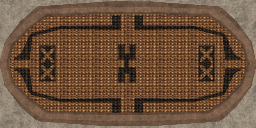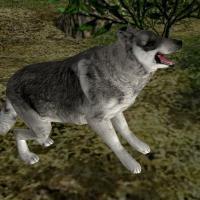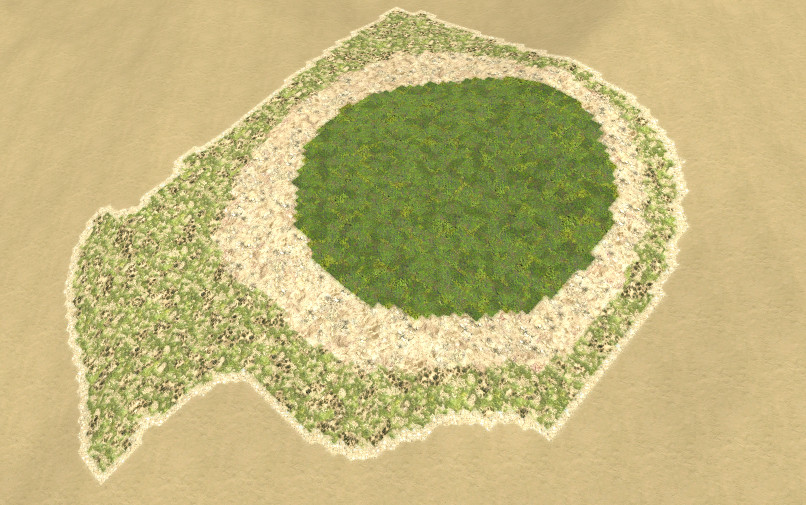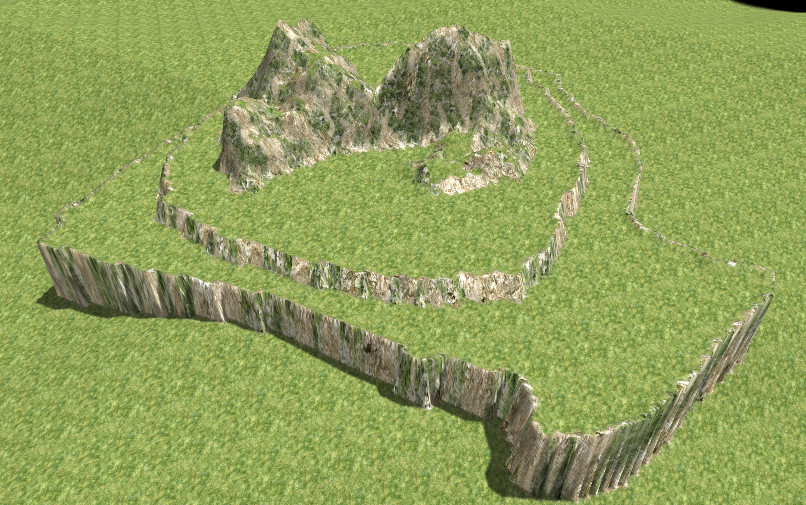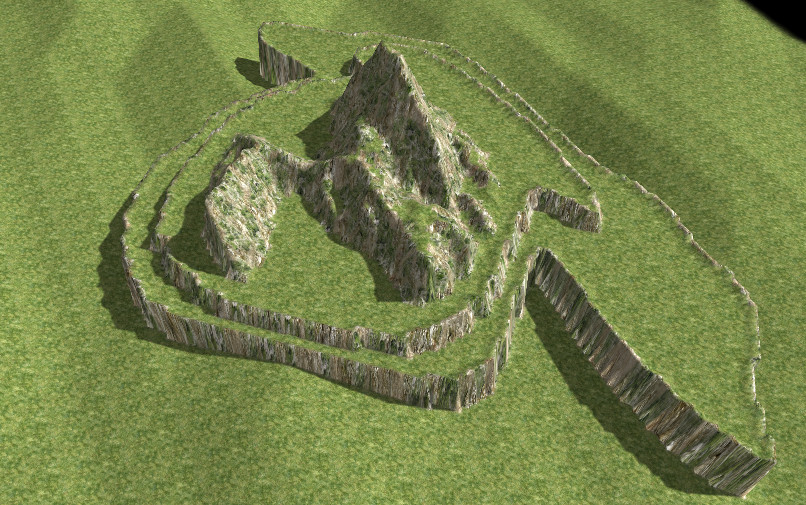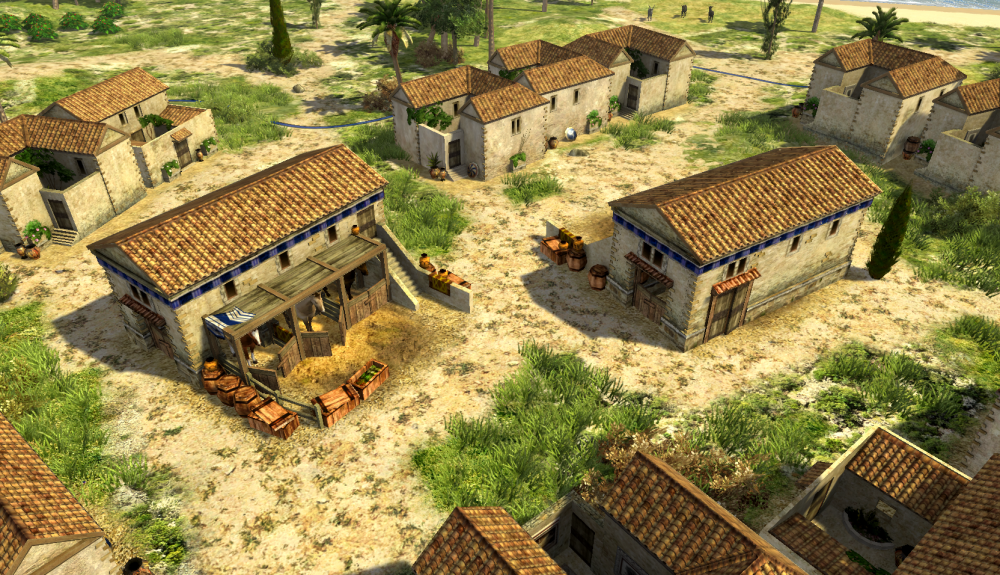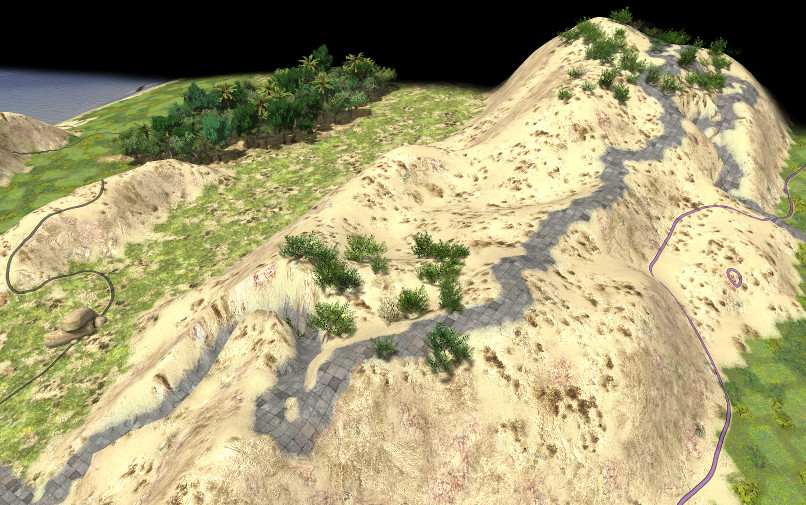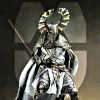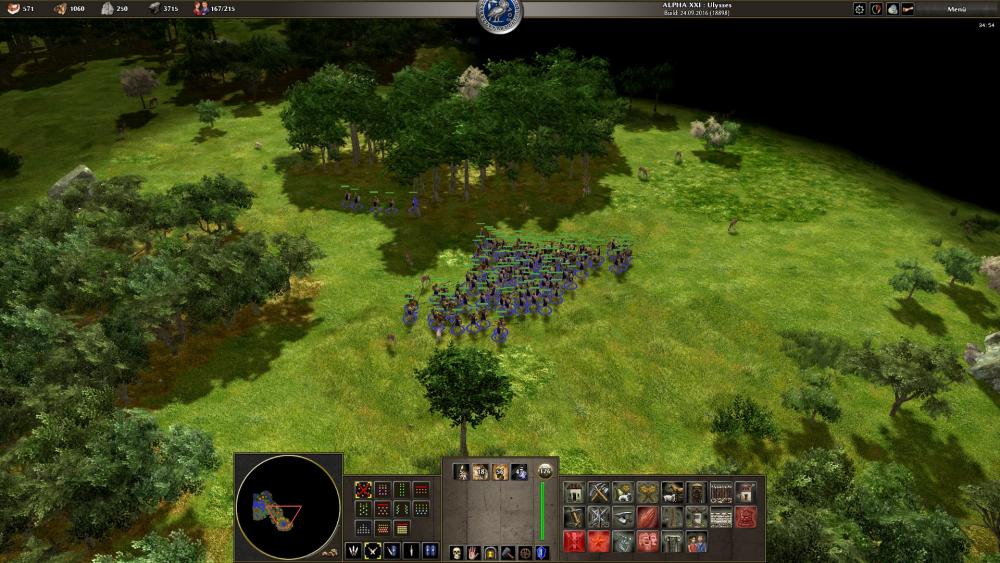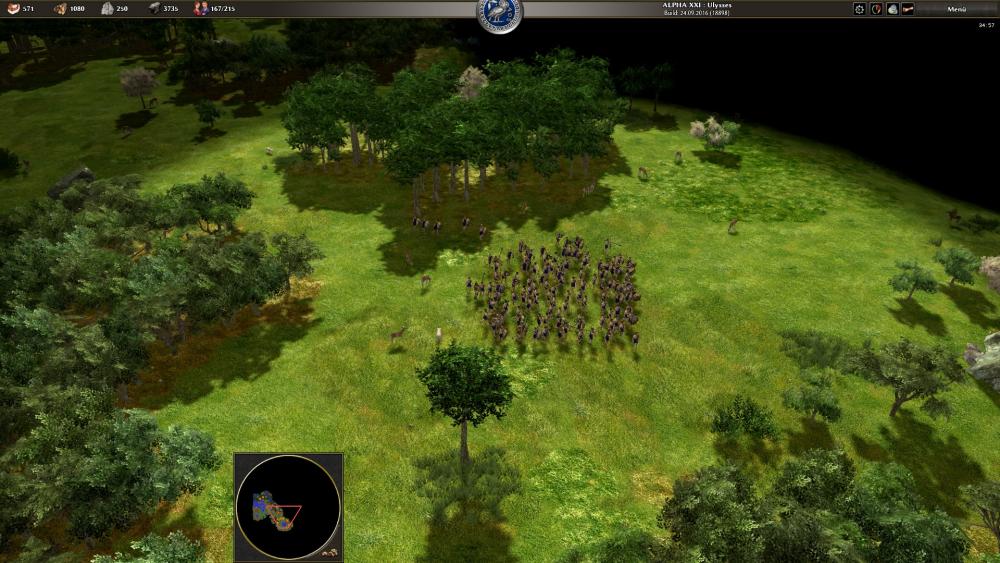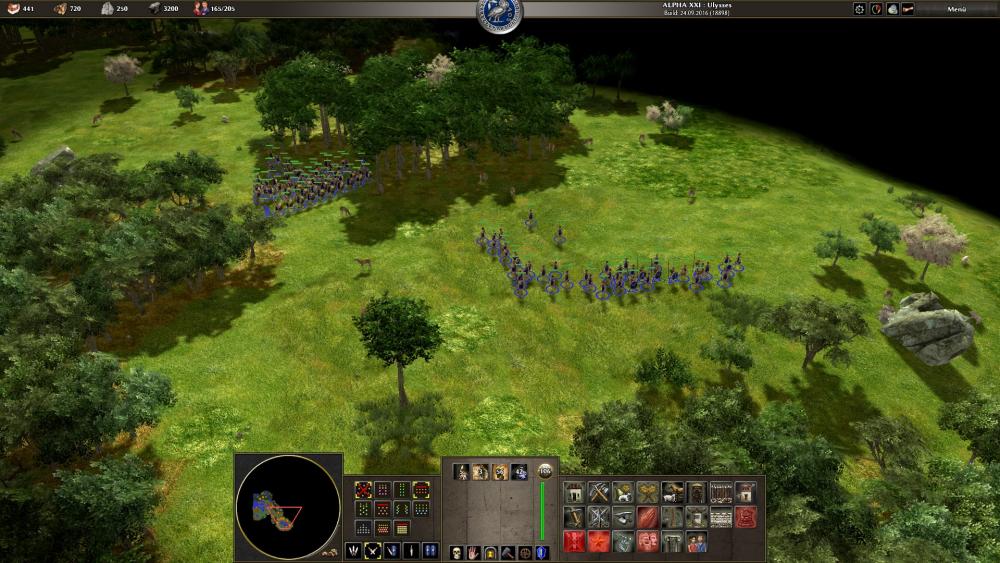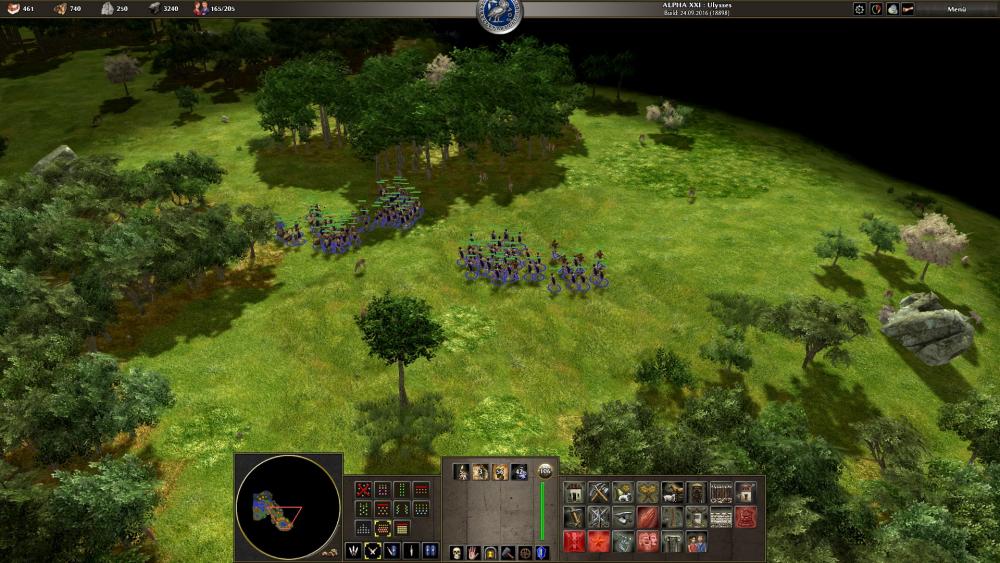Leaderboard
Popular Content
Showing content with the highest reputation on 2018-02-26 in all areas
-
Hey guys, As you may already know I made my own version of the actor editor. I have now come with a beta version. If you guys wanna test it out here is a zip file Known bugs When using the browse for options you'll have to remove the absolute path beginning (ie : "E:\0AD\binaries\data\mods\public\art\variants\" to only \variants\) Installation. You need to edit the config file to point to the material folder of 0ad, else the dropdown won't work. The file is called app.config and located near the executable <?xml version="1.0" encoding="utf-8"?> <configuration> <configSections> </configSections> <startup> <supportedRuntime version="v4.0" sku=".NETFramework,Version=v4.7.1" /> </startup> <appSettings> <add key="material_path" value="E:\\materials\\" /> </appSettings> </configuration> Just replace E:\\materials\\ by something like E:\\0AD\\Binaries\\Data\\Mods\\Public\\Art\\Materials (Double backslash are important) Then just run ActorEditor.exe Current Features Actor Edition Variant Edition Dark Mode Actor Creation Variant Creation Features to come Particle Edition Support SoundGroup Edition Support Material Edition Support Release.zip7 points
-
We're at this point of the discussion again? Woohoo! Asides from the lack of staff to spearhead this thing, I think the biggest hurdle for the Gameplay Feature is this: the current playerbase. The current playerbase like the general gameplay as is. And they'll fight tooth and nail when that balance gets broken. Now for my continued hibernation because I have yet to get over the Holiday Hangover.3 points
-
Introduction Realising that confusion on where the gameplay is/should be heading is still going on and inspired by discussion in this thread, I've got a number of different proposals for the game. They are based mostly on old ideas (not necessarily mine), while writen mostly on memory and would have improvements, extra details and better presentation had I used my notes. However I'll try to be as objective as I can about them and explain their pros and cons in hopes that they might inspire something. They also include related games that you might like if you like each Idea or regardless. 1. "4x/Grand Strategy with Tactical/Battalion Combat System" Features: Battalion/Positional Combat (flanking etc) Battalion-only Recruitment Battalion Leveling & Customization Running/Charging, Morale and/or Stamina, Unit Abilities? Demoralized/Depopulated units (battalions) will flee to a friendly town (or territory) to replentish unless destroyed/rallied Towns are single, customizable/upgradable entities, (could be consisting of additional current building models under a single entity as they upgrade?) Towns have their own manpower pools and tech levels Towns and capturable resources/structures autogenerate income (or grant bonuses), possibly only if occupied by worker "battalions", including captured enemies (slaves) Lootable trade routes between cities and ports. Supply lines? Focus on real world maps? Pros: Not overdone, much room for innovation Easy to assign unit roles even without counters Easy to represent large armies Fits great with territory and capturing concepts Easier to design campaigns and sandbox historical scenarios Religion/Culture/Politics could fit in well as techs, choice pairs, auras etc Easier and fitting to introduce new civs Cons: A quite a lot of work thrown away, and extra work needed Limited/no citybuilding More prone to snowballing due to capturing Hard to balance a competitive multiplayer game in this style Similar Games: Hegemony Series (Philip of Macedon/Gold/Rome e.t.c.) Partly Similar Games: Paradox Games (Crusader Kings, Europa Universalis, Stellaris e.t.c), Rise Of Nations / Empire Earth, Total War Series , Spartan / Gates Of Troy 2. "Age Of Empires Clone" Features: Familiar Age Of Kings based gameplay No citizen soldiers, capturing, leveling, territories, heroes Mostly shared unit classes among civs Universal upgrades Focus on Random Maps Mostly Hard Counters Pros: Tested formula and desired by many who want the new AOE Kinda easy to balance Relatively little extra work needed in art and coding Scouting is valuable and replayability high due to random maps Cons: Some work thrown away Very little innovation Similar Games: AOE Series, Star Wars: Galactic Battlegrounds 3. "Starcraft A.D." Features: Familiar RTS gameplay, somewhat more modern and fast paced than AOE No citizen soldiers, capturing, leveling, territories, heroes Structure Requirements instead of Ages/Phases, Local Structure Upgrades Unique roosters for each civ Focus on Skirmish Maps Mix of Soft and Hard Counters Pros: Tested formula, ideal for competitive if done right Relatively little more work needed in art and coding Unique unit roosters Scouting is valuable due to largely visible tech Balanced Skirmish Maps Cons: Hard to balance and diversify unit roosters due to similarities among historical troops and the number of civs Some work thrown away Not much innovation Similar Games: Starcraft, Armies Of Exigo Partly Similar Games: Warcraft Series 3.5. "2 & 3 Mixed With Possible Extras" Features: Familiar RTS gameplay No universal citizen soldiers, capturing, leveling, (heroes/territories?) Structure Requirements instead of Ages/Phases, Local Structure (and some local tech?) Upgrades Partly unique roosters for each faction OR "unique feature": Customizable units (chose weapons & armor with preset stats bonuses and cost for each of your unit classes in game) "Unique Civ features" : A civ could upgrade/level units through combat (Romans?), another have a limited form of citizen soldiers (Athenians?), another units that toggle between melee and ranged weapons (Persians?) another have (some) soldiers that can build e.t.c. Focus on Random Maps Mix of Soft and Hard Counters Pros: Partly tested formula Relatively little more work needed in art and coding Scouting is very valuable due to largely visible tech and random maps. High replayability. Cons: Could be a bit hard to balance A little work thrown away Not too much innovation Similar Games: Empires Apart, Ancient Wars Sparta / Fate Of Hellas Conclusion While I know that none of the ideas above is reinventing the genre, I consider them doable and cohesive enough and I think the game needs something along those lines to reach a complete stage at some point in the not-so-distant future. It might be still on alpha, but how many more alphas will there be? I guess 4 to finish the latin alphabet, or even just 1 to complete it's classical form? Going to Beta usually means a feature-complete game lacking only polish. By going overly-ambitious while changing goals frequentily along the way things get messed up. This should be especially understood by an everchanging team of unpaid volunteers if they are to deliver something good, which would be quite an achievement and is still possible. I'll try to rank my proposed ideas in two ways. If going by innovation (and risk) as the desired factor, I'd suggest them in order 1>3.5>3>2. If going by practicality I'd likely say the opposite, though I'm not sure on how to rank 3.5 and 3 in this case. Imo the last 3 could easily trade specific features with each other but not with the first one. Anyway... eveyrone is free to steal from the above for whatever use, also discuss, challenge, add your own.2 points
-
2 points
-
Nothing is set in stone, and historical accuracy is what we aim at. So I'm writing down that Aramaic/Hebrew mixed with Proto-Berber suggestion in my notes2 points
-
Modern Hebrew is basically a revived dead language, based upon ancient Hebrew, although there are some differences, of course. Furthermore, Carthaginian, Phoenician, Aramaic, and Hebrew were different yet also mutually intelligible (cf. Danish, Swedish, Nynorsk, Bokmal). And yes, a combination of Phoenician and Proto-Berber would be better, however, very little Phoenician has survived, and Proto-Berber can only be reconstructed. Therefore Carthaginians speaking Hebrew, although historically incorrect, could be sensible nonetheless.2 points
-
Has anyone of you ever played Cossacks? It's a Ukrainian game developed around the same time as Age of Kings. Compared to 0 A.D. it runs at lightning speed Anyway, the engine can comfortably handle thousands of units without any noticeable lag, which can be commanded individually, in groups, or in formations. Formations can easily massacre thousands of enemies frontally approaching, but if attacked from the rear, a complete formation can be slaughtered by a small number of opponents. Furthermore, the game has superb artillery, very powerful warships, and towers which can be upgraded individually. My point is we should not limit 0 A.D. to be merely an Age of Kings clone. Age of Mythology, American Conquest, and Rise of Nations are simultaneously very different and rather similar to each other, as well as being great games in their own right. Non-RTS games such as Stronghold or Heroes of Might and Magic IV are also worth looking at. A total gameplay overhaul is probably undesirable, but we should remain open minded about including new features which work great in other games.2 points
-
I haven't seen the movie yet myself, but I will at some point. Lol! Dem Azande shields... I'm honestly not the the biggest Marvel or DC guy... I always prefer history over fantasy , but the production value on Black Panther seems through the roof, looks gorgeous and everybody seems to love it... It's also an interesting premise for a movie and it kind of reminds me of Coming to America with Eddie Murphy taking the role of Akeem, the crown prince of "Zamunda"(totally different movie, but you get me...). It's nice to see a technologically advanced Africa for a change. We're used to the image of an underdeveloped starving, warring continent, but there's so much more... In Ghana for example, we have a lot of problems, but we also have a lot of cool stuff going on. Kind of reminds me of some "corporate" friends I have over here who are totally in to tech and gadgets. I saw my first advanced drones in action here years ago, when my friends in Belgium barely knew it was even possible for a private individual to own one. Using it for digital surveys/mapping and HQ promotional videos for tourism. Kantanka Automobile has been producing quality Ghanaian cars (4x4 ,SUV, Sedan) for a few years now. The first Ghanaian built satelite was launched in to space (by space X and the Japanese Aerospace Exploration Agency ) last year. Just yesterday I was watching a news-piece about a Ghanaian video game company in Accra . One of the chief robotics engineers at Nasa and "the leader of the team that designed the Mars Rover robot that landed on the red planet", the Ghanaian born Ashitey Trebi-Ollennu, has established the Ghana Robotics Academy Foundation to inspire and teach young Ghanaians how to build and code (simple) robots. These are just some example from Ghana, and It's difficult to keep track of all the developments continent wide but it's an exciting time.. So I should watch Logan huh?2 points
-
@wowgetoffyourcellphone - bro, you got baited into the discussion again! @Prodigal Son - I think focusing on your mod's ideas would, for me, be the best course of action. Don't expect those ideas to transfer to the base game, since a lot of threads proposing changes to the core game have been presented, deliberated, and dismissed.2 points
-
2 points
-
The gif is obviously posted in jest since I have previously admired your work and other posts. Perhaps you don't understand the sheer amount of blood spilt over this single issue over the many years. The only answer is modding so you can demonstrate your ideas, else you just start the 50th thread where good ideas go to die.2 points
-
Just took my son to see Black Panther this weekend. It's pretty good. I'd rank it next to Iron Man 1 and Wonder Woman as a solid tier-2 superhero film. For reference, I'd put Man of Steel, Ant Man, and Thor films at tier 3, and then it gets precipitously worse after that [the less said about films like Catwoman and Batman vs. Superman the better]. Tier 1 for me would be films like The Dark Knight, Guardians of the Galaxy 1 and Captain America: Civil War and Avengers 1. The music in the trailer is pretty dire and doesn't do the film justice. Anyway, I could recognize inspiration taken from all across Africa for the Wakandans. Most interestingly, I saw these shields in the movie: VERY BRIEFLY, near the beginning when Tchala is being initiated as king, there is a flotilla if ceremonial barges with dancing women on them heading toward a waterfall, attached to the sides of one of the barges are these shields above. I said, AHA! out loud in the theater. lol I was also the only one to laughed out loud at the "colonizer" quip toward Bilbo Baggins from Tchala's feisty sister, but that's irrelevant here. Tchala's shield during the ceremonial challenge fights looked very similar to the stick shields @Sundiata suggested for the Nuba units. It also looked similar to Zulu stick shields such as this: Lastly, I'll say Nupita Lyong'o was extremely hot in the film. Wish I could make her my queen!1 point
-
I know you all guy have been waiting with holden breaths. I will synthesize some of Darcreavers ideas, along with comments and suggestions from others, and merge them with some concepts from my mod to propose a new gameplay for 0 a.d. I hope you guy like this. I commend you for reading all the way through. General Concept In general, most think there are structural problems with the game's design. I will not comprehensively rehash them here as there are a dozen threads on this topic. I will simply propose the vision and you guys and accept or reject it. So, in keeping with my mod, Delenda Est, I propose a "weak countryside, strong core" concept, but incoporporating some of what has been said over the past couple weeks. What I propose to do is also keep elements of the citizen-soldier concept, while also creating a hard battalions paradigm that also works with single units. The concept also takes into account many of Darc's criticisms and suggestions from others. Map Control Control of the map is crucial because of a few factors. Most important buildings, like houses and barracks, can only be built in the player's territory, so grabbing more land by building new settlements is important to population growth. These buildings are capped per settlement, so building more settlements and grabbing more land is important for building new buildings. Most resources are usually far away from the starting position of the player and are concentrated in impressive, lucrative depots. The countryside contains beneficial items like herd animals, which act like food relics, and mercenary camps, from which you can train 0-pop, fast-training mercenary soldiers. Grabbing territory or controlling the map deprives your enemy of the benefits of these things as well. Countryside Concept: Weak Countryside, Strong Core Players can now build Storehouses and Farmsteads in neutral territory. Most necessary resources are also placed in the neutral "no man's land" between starting territories of players, so now it's crucial to gather resources away from easy defenses. This is the "weak countryside." Territories now represent city-boundaries instead of national borders. Important buildings like barracks and fortresses and houses and markets must be built in the strong defensible core territory, while resourcing operations, like mining and farming, are done out in the dangerous countryside. This represents the reality of ancient times: the concept of national borders was not well-defined and many times nations and empires were separated by wild frontiers rather than by solid lines on a map. Settlement Phases, Territories, and Provinces Each Civic Center building casts a territory (Civic Centers, Wonders, and Fortresses are the only buildings to cast a significant territory range). This is a province, and each subsequently built civic center dynamically creates its own province, whose territory does not merge with an adjacent Civic Center's territory. So, each Civic Center's province is its own territory, size dictated by the Settlement Phase the province has attained, via the number of buildings built within it. Village Phase Small territory. Economic-focused. Hunt, gather berries, scout the map for herdable animals, treasures, mercenary camps, and neutral settlements. Set the foundation for your home settlement's progress. Food is the most important resource, while Wood becomes increasingly important as the player builds more buildings. Player is probably scouting heavily for farmlands, quarries, and mine shafts. Train Citizens from the Civic Center and Slaves from Storehouse and Farmstead. Citizens can upgrade to soldiers for a short time with the Town Bell for defense. More detail below in the 'Units' section. Palisade walls and wooden defense towers are available for defense. Town Phase Requires 10 buildings built within its province Territory grows by 25%. Unlocks barracks, blacksmith, market, shipyard, cult statue. Train your first citizen-soldiers and light warship. Stone and Iron now become a needed resource, for military buildings and blacksmith teching respectively. Player is probably heavily into farming on farmlands now and has captured a number of herdable animals that can be garrisoned in a corral for a free trickle of food. Stone walls become available and wooden defense towers can be upgraded individually to stone. Player may attempt to capture 1 or more neutral settlements on the map to gain a territorial advantage over the enemy. City Phase Requires 25 buildings built within its province Territory grows another 25%. Unlocks Fortress for heroes, champions, and siege weapons. Trade routes should be set up by now. New civic centers unlocked: Found new settlements now instead of only capturing neutral settlements. Mercenaries become part of the mix as mercenary camps are captured and the coin resource is acquired to hire them. Capital Phase Requires 1 Wonder, which costs 1000 wood, 1000 stone, and 1000 glory. Territory grows a final 50%. Unlocks all remaining special techs, uber techs, and siege techs Units train faster, buildings build faster, citizens and slaves gather faster inside the Capital province. Only one province can be in Capital Phase at once. If the Civic Center is destroyed or captured or the Wonder destroyed or captured, another settlement may be upgraded to Capital by building a Wonder in its province. An example of how it would work: Build 10 buildings within a village phase province and the province territory dynamically grows to reflect the new Town phase, complete with a graphic and sound effect to tell the player this has happened. The Civic Center looks bigger and more ornate, owing to the province's new size and importance. Stone walls can be built in the province now, and the wooden defense towers can be upgraded to stone defense towers. A market can be built in the province now, as well as a blacksmith. Since the barracks is now unlocked, you can train your first dedicated soldiers. Build 15 more buildings and BOING, the province grows again to the City Phase and Fortresses can be built in the province as well as special buildings. Finally, build a Wonder and DOOONG that province becomes the Capital phase, the province gains more territory, additional special techs and abilities can be researched, and things just work faster and better. Just an example of how it can work. Point is, not every province upgrades together as one. Each one can have a different phase of development. Resources As Darc suggests, I propose additional resources used for different things. I maintain that it does not matter how many resources the game has, within reason of course, only that the resources are unique, are used for logical purposes, and entities, which are units buildings and techs, only cost 2 different resources besides time and population, which are quasi-resources. Food: Every unit costs food with a few exceptions. Berries. Keep the berry bushes, but make them more visible somehow, I propose with new decals beneath them to make them stand out. Only need a batch of them at the starting points on the map. Yes, when founding a new colony, food comes from anywhere it can. Snowy maps = no berries or maybe 1 or 2 bushes; desert maps = 5 bushes; temperate, tropic, or mediterranean maps = 2 x 5 bushes. Farmlands are introduced and are usually situated just outside the starting territories of the players and then at nice flat or rolling areas of the map with few trees or rocks. Fields and Farmsteads can be built in neutral territory, so build your fields on the farmlands for a farming boost of 50% or more. Farming near Civic Centers and Temples is penalized. Hunting can be achieved with the free Scout Cavalry unit provided at the beginning of the match or by Citizens. Hunting is only a minor source of food. Fishing is the same as currently. There are Herdable Animals that are easily captured, like in Age of Empires, and can be garrisoned inside Corrals to gain a trickle of food (for sheep, cattle, and goats) or to gain a training bonus (camels, horses, elephants, etc.). These are 0 A.D.'s version of the "relics" seen in Age of Empires or Age of Mythology. Wood: Most economic and civic buildings and citizen-soldiers cost some amount of wood. There are straggler trees and then there are groves. Stragglers have a gather limit of 5 gatherers, and will not prevent the construction of buildings. A building can be build over a straggler and the straggler will be removed from the map. Groves represent sections of forest, so are larger and contain more wood resource, representing many multiples of trees. They have a gather limit of 20 and cannot be built upon. Pathfinding obstruction is removed from all trees. Groves, by representing forests, give a combat bonus to "barbarian" civs like the Iberians and Celts, while also giving a movement rate penalty to siege weapons. So, now we can have combat inside forests and maybe give some kind of ambush feature. Off the top of my head, I can see tasking a battalion of Celtic soldiers directly to a grove and then being given some kind of bonus by doing so. Like, ctrl-right-click the Celtic soldiers to the grove and get a custom cursor telling you they're going into guerilla or ambush mode when they get there, kind of like "garrisoning" the battalion into the grove. A lot easier to do something like that with a large grove object than with a bunch of individual trees. Stone: All military and defensive buildings cost stone. Slingers cost a small amount of stone. Stone is acquired from stone Outcrops and stone Quarries. Outcrops are the stone mines already in the game. 1 or 2 of them can be found near the starting base of each player. But aside hills or in the sides of mountains or cliffs are Quarries. These are large objects that look like open pit granite or marble mines. They have a "slot" on which a Storehouse can be built. Building a Storehouse on the slot claims the Quarry for the player. Gatherers can now gather from it and they don't have to shuttle back and forth to the slotted Storehouse. Iron: Mined from Mine Shafts and used to train sword units and research technologies, especially at the Blacksmith. Like a Quarry, a Mine Shaft has a "slot" on which to build a Storehouse and claim the Mine Shaft for the player. Gatherers can then be garrisoned into the mine entrance to gather the Iron. They will shuttle iron resource into and out of the mine entrance to and from the Storehouse. If the player's Storehouse is destroyed by the enemy, the gatherers inside the mine die. Coin: Call this silver, call this gold, call this coin, call this Precious Metal, I don't care. I'll call it Coin for this presentation. This is primarily gained from Trade, either with yourself or with your allies, and sometimes can be had via Treasure or Loot. Used to train Champions and Heroes and recruit Mercenaries. Coin is also the basis for the Barter system at the Market. By capping the bartering system to a Con-based system, you must now choose to use the Coin to barter or to buy things like Heroes, Champions, special techs, etc. A Coin-based barter system helps prevent resource floating because you can't now use a plentiful resource like Wood to flood the market and get easy iron or easy stone. Glory: Directly from Delenda Est, this is attained by building Cult Statues and by killing enemy units and buildings. Cult Statues are praised by units to gain the Glory resource that is used to train heroes, research special technologies and battalion upgrades, and Wonders. Glory is the only resource Soldiers and Heroes can help you gather, by killing enemy units. Individual hero units can also gather Glory by praising Cult Statues alongside gatherers. Buildings Buildings are largely the same as they are now, with some major and minor changes. The Civic Center, Mercenary Camp, Outpost, Wonder, and Dock are the only capturable buildings. Econ, Defensive, and Military buildings must be destroyed. Not all buildings are listed here, just some of them with some notes. Civic Center Used to train Citizens and create provinces. Besides Wonders and Fortresses, Civic Centers are the only buildings that cast a significant territory. Provincial territories created by Civic Centers do not merge or overlap, but may border one another. Phase techs removed as researchable techs with costs. Instead, they exist in the Civic Center UI to tell the player the prerequisite for phasing up. The tech itself is auto-researched once the required number of buildings is built. Settlement phases can vary per Civic Center/Province. This dictates what the player can build in each province and how large each province's territory is. Capturing a Civic Center immediately transfers control of that's province's ungarrisoned houses, temples, and markets to the capturing player. Dock and Shipyard Civs with more than 1 warship class receive a warship-centered Shipyard, which is separate from the economic-focused Dock. Docks are capturable, Shipyards destroyable. Corral Sheep/Goat training either removed or revamped. Primary purpose is to house Herdable Animals, which act like "relics" from Age of Empires and Age of Mythology. Techs revamped to this new focus. Houses In Village and Town phase houses can be built. City phase unlocks the tenement building or city block building, which is a large "house" structure that gives 2.5x the pop cap bonus as a standard house. Market Can configure to gain a "tax" trickle of coin, and perhaps all other resources besides glory. Set up trade routes between markets or market and civic center, haven't decided, to gain the coin resource. Trade with allies is more lucrative, but trade with other provinces of your empire is possible. Max 5 traders per market, 1 market per province. Bartering is a coin-based system. Sell food, wood, stone, and iron for coin, or buy those resources with coin. Cult Statue Each Cult Statue is more expensive than the last. Building these gives you the Glory resource. Each one gives a slow trickle. Task citizens or slaves or other individual units to the cult statue to praise it and get more Glory. Fighting and killing enemy units and buildings gains the player more Glory. Mercenary Camps Between 1 and 2 of these per player on every map. Hire mercenary battalions, who train fast and cost 0 pop, but are limited to 3 battalions for the first merc camp, and +1 for each new one captured. They're also rather expansive, costing coin and some other resource. Capturing Buildings Capturing is an important feature of the game. Capturing an enemy civic center gains that province for the player and can be devastating to the enemy. Capturing is modified a bit to be a decisive element to the strategy of the game. Soldiers will default to capturing these buildings instead of destroying them, though, with the exception of Mercenary Camps, it is possible to toggle on kill-attack and destroy these buildings instead. Capturable Buildings: Civic Center Capturing a Civic Center also captures all the ungarrisoned houses, markets, and temples in that province. This is a decisive action. Neutral Settlements These are neutral or Gaia civic centers found on the map. The initially cast no territory until captured. Mercenary Camps Capture these to train mercenary battalions. Wonder Capturing an enemy player's wonder removes the Capital phase designation and bonuses from the enemy player's province. Dock Outpost Units Okay, here you have my proposal for units. A way to maintain some citizen-soldier features while implementing a real battalion combat system with cool upgrades. Integrates a lot of what has been talked about on various threads. Gatherers and other support units are individual units, while fighters are battalions. Slaves. These are like Dwarves in Age of Mythology. They do nothing but gather resources and cost 1 pop. Low health, capturable, they can be "Upgraded" to Forced Labor mode, where they gather resources at a much faster rate, but start to lose health in the process. These are your strictly economic units. Trained from Storehouses and Farmsteads. In Delenda Est, I distinguish male and female slaves, which adds a nice twist, but this isn't completely necessary for the concept to work. Citizens cost 2 pop, trained from the Civic Center. Have a "Slave Masters" aura that replaces the female citizen aura. It boosts the production rates of the Slaves. Citizens are gatherers too, but not nearly as good at gathering resources as the Slaves are. Their main benefit besides managing the Slaves is that they build buildings. They are capturable. Now, I propose there be a change to the Town Bell. So that, with the Town Bell, the Slaves run and hide, while Citizens don a militia kit and fight against invaders. For Greco-civs this kit is that of a light-armored hoplite for example. This still makes raids effective, as while they do this they aren't gathering, of course. If the Town Bell isn't rung, then the Citizens only fight back with knives and pitchforks -- would be cool if they fight back with whatever econ tool they were using -- hoes and pitchforks if they were farming, axe if they were wood cutting, mallets and hammers if they were building, etc. Obviously low attack strength, armor low, very weak, easy to kill when not mustered. When Town Bell rings they don armor and true spears after a "Muster Time" which can be reduced with techs. Attack and armor doubled when mustered. But while in this state they are a formidable defensive force, you do not want to keep them in this state for longer than necessary, because you want them to go empower slaves to gather resources, build or repair buildings, etc., basically you want them to go back to civilian life asap. The Town Bell is given to Storehouses and Farmsteads now too, with smaller radius, so that if a resourcing operation is being raided, you can ring the bell for that Storehouse, for example, and the Slaves hide in the Storehouse while the Citizens don their kit after mustering and attempt to defend the site. Citizen-Soldiers are train from the Barracks. They have the Slave Masters aura too, a nod to their citizen status, but they do not gather. They are mustered to fight and are always ready for battle. They can, however, build some select military and defensive buildings, like Fortresses, Defense Towers, and Catapults. These guys are battalion troops. They are trained in battalions, live build fight and die in battalions. They accrue experience and rank up, just like the current Citizen-soldiers do, but on a per-battalion basis. They tend to only cost Food and Wood, your "trash" units, but some like swordsmen can cost small amounts of iron or slingers a small amount of stone instead of wood. Each battalion costs 10 pop. Mercenaries cost 0 pop and recruit quickly, but have a low train limit, something like 2 battalions per captured Mercenary Camp, which are scattered about the map, usually 2 per player. Mercenaries do not contribute to Loot (they keep it themselves), but are trained at the Advanced rank (some elite mercs are trained at the Elite Rank, but are costlier). They are not Slave Masters, since they aren't citizens, but can build military buildings like Citizen-Soldiers. They usually cost Coin and some other resource, depending on their soldier class (e.g., swordsman, spearman, slinger, etc.). Champions. Next up are your professional soldiers. Just like currently, they do nothing but fight and are usually trained from the Fortress or some other strong or special building. Like Citizen-Soldiers, they live fight and die in battalions. They aren't Slave Masters, so have zero economic benefit, but they boost the effectiveness of Citizen-Soldier battalions who fight nearby. Champion battalions guys can be bolstered with battalion upgrades, like Noisemakers and Officers, that give benefits. A Noise Maker, such as a flutist or trumpeter, unlocks the inspiration aura that boosts nearby citizen-soldiers, while the Officer boosts that particular Champion battalion. Champions have a battalion limit determined by gameplay testing, but generally 4 or 5 max, if a typical army ends up being 15-20 battalions of Citizen-Soldiers. Champions are supposed to be the best of the best, your shock troops, while the Citizen-Soldiers are the "rank 'n file" line troops. Champions cost Food and Coin and 15 pop. Heroes can come with guard battalions --usually champions or modified champions -- or as single units, depending on the hero and his historical and gameplay role. For instance, Chanakya, the advisor and teacher, would come as a single unit while Leonidas would train with a battalion of heavy-duty Spartiate Hippeis hoplite champions. Of course, in Atlas for scenarios it's possible to have the individual hero available. Heroes have special abilities and auras. About 10 standard auras and abilities should be decided through testings and debate, and then doled out to the heroes based on history, IMHO, with maybe some minor variations, and of course with custom names. Right now the auras are very scattered and unbalanced. Tighten that up. They cost Coin and Glory. Single heroes cost 3 pop. Heroes with champion guards cost 15 pop. Healers cost Food and Glory, while Traders cost Food and Wood. Healers can heal one soldier or unit at a time or can be attached to battalions, giving all soldiers in the battalion a slow healing effect. Traders are less numerous than currently, capped at 5 for every Market built, which are themselves capped at 1 for every settlement/Civic Center. They trade in the Coin resource, which can be used to purchase other resources at the Market if necessary. By capping the bartering system to a Coin-based system, you must now choose to use the Coin to barter or to buy things like Heroes, Champions, special techs, etc. A coin-based barter system helps prevent resource floating because you can't now use a plentiful resource like Wood to flood the market and get easy iron or easy stone. Scout Cavalry cost only Food and 1 pop. All civs get them. They're weak, but they can hunt and scout very well. Every civ gets at least 1 at the start of the match. Train limit is 2, retrainable from the Civic Center if killed. Movable and packable Siege Weapons are trained from the Fortress, but the Catapult siege weapon is buildable by soldiers in the field, on anyone's territory, including neutral and enemy territory, after researching Ballistics at the Fortress. Bolt Shooter weapons are packable and moveable, and can be stationed/garrisoned atop walls, towers, fortresses, and aboard ships. Siege weapons tend to cost Wood and Iron and around 5 pop. Warships generally cost Food and Wood. Upgrade individual heavy warships with catapults for a cost. Garrison archer battalions or Bolt Shooters aboard for greater firepower. Ram other ships for a devastating attack. Boarding left for 0 A.D. Part 2, unless someone magically comes along and wants to code units fighting atop decks and walls. I feel like garrisoning and ramming is enough naval combat complexity for Part 1. Battalions and Combat Battalions Citizen-Soldiers, Mercenaries, Champions, and some Heroes are no longer individuals, they are part of a group or battalion. Guys, I will give you the rundown of how it would work. Training Soldiers are trained in battalions and live and die in battalions. A battalion of melee infantry would have 24 soldiers for example. They are trained 1 battalion at a time. Shift-train queue up 5 battalions in a row and give a "batch" discount not unlike the batch discount game already has. The soldiers exit the building together as a battalion and head off to the rally point. Cost A battalion of citizen-soldiers (Spear Infantry, 24 soldier) would cost roughly 600 500 10, so 1 large house or 2 small houses have pop for 1 battalion. In a 300 pop match player might have 20 battalions to manage instead of 200 separate units. Reducing the micro-management is okay, because additional management and features are added elsewhere. Continue reading. Extra Units and Upgrades A battalion will have 1 or more extra eye candy soldier to help distinguish each battalion. Default: Bannerman. He comes automatically with each battalion and costs nothing extra. He does not fight and does not die until the last soldier in the battalion dies, then the Bannerman dies. Enemy soldiers ignore him like he is just a ghost actor. This is the Aquilifer for the Romans for example. Champion and Elite Upgrade: Noise Maker. Upgrade battalion with a noise maker dude that increases the effectiveness of nearby citizen-soldier battalions. For example for the Celts this would be the man who blows the Carnyx (intimidation). For the Romans this is the man who plays the Cornūs . Athenians, Spartans, Thebans get a flutist who plays the Aulos. Champion and Elite Upgrade: Officer. Upgrade battalion with an officer unit who fights. He is tenacious, with double or triple the health of other soldiers in his battalion. He is the Centurio for the Roman civs, the Polemarch for the Spartans, etc. His presence in the battalion makes that battalion all-around better at everything until he is killed. Heroes: Some heroes can have a bodyguard so that they are their own battalion (like Octavian Augustus comes within a battalion of Praetorian Cavalry, Leonidas comes within a battalion of Hippeis Spartans, Xerxes come in a battalion of Apple Bearers, etc.), while some heroes train as individuals, depending on each hero. A hero in a battalion is treated by the enemy just like any other soldier in the battalion. The Hero takes his/her place right in front of the bannerman on the right corner of the battalion (the place of the "officer"). Reinforce: If near a barracks a low strength battalion could be reinforced with new free soldiers (they appear behind bannerman and assume their place in line). Can be done with an aura or can implement a new mechanic where a battalion is tasked to a Barracks or Fortress for reinforcement to happen. Promote: Each battalion accrues Experience, or XP, when fighting. When battle is over, the player can promote the whole battalion at once if that battalion has accrued enough XP. Or we can get rid of XP entirely, and just use the new Glory resource. A battalion can be promoted from basic to advanced or from advanced to elite at any time, provided the player has enough Glory resource banked up. Selection and Movement Selecting any soldier in the battalion select whole battalion. Soldiers in battalion will squeeze together to fit the battalion through narrow pathways. When sent over long distance, battalion form into column to snake around obstacles and through narrow paths. User Interface Every battalion that is created gets automatically a ctrl-group icon on left of screen. Ctrl-groups can be made by the player for multiple battalions if player wishes. These get a different icon, along the left of screen. Vision and Range Finding Vision range calculation, aka "Line of Sight", can be performed on a per battalion basis, as can range finding, at least for ranged units. This could significantly help reduce CPU overhead? Formations How do they work? Soldiers fight in formation and generally hold the shape of the formation within parameters. The more men in the formation the closer they hold the formation. As men die, the formation cohesion lessens. Number of formation buttons are reduced (fewer formations than currently in the game; this is okay, you will see) Formations give bonuses and penalties Can be altered with a small number of Formation Modifiers Most civ will only have 3 Formations for their Battalions and then 3 Modifiers There is "frontal" or "directionality", based per battalion not per soldier for simplicity. Frontal armor at 100%, Left and Right armor at 50%, Rear armor at 25% of the given stat Could make this a little more in-depth, by making the hack and pierce armor values different based on directionality of incoming strikes. Formations and uses Column Civilizations: All Unit Classes: All Auto/Manual: Automatic, when distance between waypoints is long, is applied automatically to the battalion Modifiable: Yes Bonus: 1.25x Speed Penalty: .75x All Armor, so more vulnerable to ambush-like attacks Battle Line Civilizations: All Unit Classes: Infantry and Cavalry Auto/Manual: Automatic, this is the DEFAULT battalion formation for these classes of units Modifiable: Yes Bonus: +2 Frontal Hack and Pierce Armor, +1 Frontal Crush Armor Penalty: .9x Speed Wedge Civilizations: All Unit Classes: Melee Cavalry Auto/Manual: Automatic, this is when Melee Cavalry are task to CHARGE Modifiable: Yes Bonus: +1.25x Charge Bonus in addition to regular charge bonus if charge is initiate at "sweet spot" distance, not too far not too close to target Penalty: -2 Pierce Armor, makes the cavalry more vulnerable to missile, which they usually are not Testudo Civilizations: Rome (Republicans and Principates) Unit Classes: Melee Infantry Auto/Manual: Manual Modifiable: No Bonus: +3 Hack Armor, +4 Pierce Armor, +5 Crush Armor Penalty: .25x Speed, Soldiers within it can only respond to direct melee attacks made against them personally Sparabara Wall Civilizations: Persians (Achaemenids) Unit Classes: Archer Infantry Auto/Manual: Manual Modifiable: No Bonus: +5 Frontal Pierce Armor Penalty: Is a stationary formation, will not move when in this formation Abstract: The famous Persian archery shield wall; Great for archery duels Formations Modifier When a formation above is chosen, the Formation Modifiers available for that Formation become available (unavailable modifiers are greyed out) Close Order Civilizations: All Formations: Column, Battle Line, Wedge Unit Classes: All Auto/Manual: Auto, this is the DEFAULT modifier for formations Effect: Units are spaced close together, but their shields do not touch or overlap Open Order Civilizations: All Formations: Battle Line, Wedge Unit Classes: All Auto/Manual: Manual Effect: Soldier are spaced farther apart, with additional space between files and rows Benefit: Helps reduce effects of incoming splash and trample damage Penalty: -1 Hack Armor (but any Crush and Pierce bonuses remain; subject to testing) Locked Shields Civilizations: Athen Spart Mace Sele Ptol Cart Theb Epir Formations: Battle Line Unit Classes: Spear Infantry and Pike Infantry Auto/Manual: Manual Effect: Units are spaced close enough their their shields overlap, creating a shield wall Bonus: +3 Frontal Armor Bonus in addition to regular frontal bonus for Battle Line; Units in 2nd rank can attack through the front for spears, units in 2nd and 3rd rank can attack through front for pikes. Penalty: .75x All Armor from Flanks, .25x All Armor from Rear, .8x Speed Abstract: This is the Hellenic and Hellenistic "phalanx" for hoplite-style spear infantry. It is the "syntagma" for pike-style spear infantry. Later, in Part 2, this is the Shield Wall for the Germanic culture (Sueb, Alamm, Goth, Frank) Army Behavior When 2 or more battalions are selected, Army Behaviors kick in. When sent over long distance, they form a column together and snake to their destination. When the player tasks multiple battalions to an area they will automatically arrange in a classic "battle formation" (melee infantry in middle, cavalry on wings, archer in back) when they arrive, or... We could add Army Formations if we wanted to which show up in place of battalion formations in the UI when multiple battalions are selected. Acies Triplex, Refused Flank, etc. Either way, when move command to somewhere, they end up organized, not a mess. Anyway guys, this is my proposal. Athena bless you, if you read the whole thing. Let me know where the hole lie.1 point
-
At revision 21035. ERROR: JavaScript error: gui/gamesetup/gamesetup.js line 1706 TypeError: g_GameAttributes.settings.SupportedBiomes.indexOf is not a function reloadBiomeList/biomeList<@gui/gamesetup/gamesetup.js:1706:14 reloadBiomeList@gui/gamesetup/gamesetup.js:1705:16 reloadMapSpecific@gui/gamesetup/gamesetup.js:1692:2 updateGUIObjects@gui/gamesetup/gamesetup.js:2236:2 initGUIObjects/<@gui/gamesetup/gamesetup.js:1204:4 selectPanel@gui/common/tab_buttons.js:75:2 placeTabButtons@gui/common/tab_buttons.js:51:2 initGUIObjects@gui/gamesetup/gamesetup.js:1196:1 onTick@gui/gamesetup/gamesetup.js:1909:3 __eventhandler40 (tick)@setupWindow tick:0:1 when trying to set up a single player game: Loading map data, please wait1 point
-
1 point
-
Especially amongst the common people: it was adobted as the language of the bureaucracy because Aramaic was spoken by far more people than any other language at the time. Old Persian was probably spoken amongst the Persian elite, but the Persians themselves were a tiny minority in the ethnically diverse Achaemenid Empire. PS To clarify, I do not have any objections to the use of Old-Persian, which is well attested and was certainly spoken and written; it was also an official language of the Persian Empire, as were Elamite and a few other prestigious languages. However, if you want to know which language was used in communication between different ethnic (army) groups, in trade, and in daily usage by a large part of the population, then the answer is Aramaic.1 point
-
Proto-languages are called “proto-” for a reason: they are hypothetical, reconstructed, unattested languages; e.g. Proto-Berber is the latest common ancestor of all Berber languages and Proto-Indo-European is the common ancestor of all Indo-European languages. Using proto-languages would certainly be ambitious but not historically correct In that case we should seriously consider using Aramaic for the Persians: it was the lingua france of the Near-East and the language of the Persian Empire's bureaucracy. Old Persian was limited to Persia proper but certainly not widely used.1 point
-
Yeah, they weren't really meant to be a threat in AoK. We would get the added utility of hunting which was only available for villagers in AoK.1 point
-
I can split this discussion as needed if for some reason we need to keep it organized1 point
-
I do think scout cavalry (with a food only cost like AoK) would be a nice addition.1 point
-
Actually battles are determined by how many skirmishers you have got. Any archer has same stats for any civ. Mauryan and persian have archery tradition which increases their attack range at cost of their health which isn't really a good choice unless you have a solid shield of melee units. On the other hand, other civs have mercenary archers who train at rank 2.1 point
-
Ah sounddetect, there was a ticket on the alpha 23 milestone, IIRC a release blocker fixed by Itms and reviewed by s0600204.1 point
-
Athenians have champion infantry archers so perhaps you would like to play Athenians. Or you could go with Seleucids for the horse archers. Infantry archers don't do that well against massed enemy cavalry, though. They will also lose ground against spearmen/skirmishers unless the army sizes are very large. Archers do best when you can keep attacking at long range and retreating behind your defenses when the enemy starts to chase.1 point
-
Hi @MlemandPurrs! We needs more information about your system to detect a problem: Does music play in other applications? What operation system do you have? What audio configuration do you have: headphones or speakers, audio card? Do you use laptop or desktop?1 point
-
That... Hahaha, yeah, my Afro-Asiatic is also quite rusty, huhum, huhum... Aramaic/Hebrew mixed with Proto-Berber then? Any Aramaic/Hebrew and Proto-Berber speakers in the forum? Anyone?1 point
-
The interactions between different unit types need to be worked out, becoming somewhat similar to Age of Mythology. An ranged blob shouldnt be the final solution to all problems.1 point
-
Actually I would prefer Aramaic. However, this debate is rather theoretical, I believe. What we need is someone to provide some appropiate phrases with a proper pronunciation. My knowledge of Afro-Asiatic vocalubary is practically zero, so about anything would be acceptable to me.1 point
-
That's what I'm worried about. There are some modernisms in regard to pronunciations and expressions in modern Hebrew derived from the modern Yiddish and Sephardic speakers that reconstructed the language. It's exactly in their pronunciation that they differ. And Berber words enter at unexpected places.. It's just things like the following quote that make me apprehensive about having modern Hebrew sounding carthaginians in what are today Arab and Berber countries: "Add to that the fact that Phoenician does display some rather surprising discrepancies with Hebrew when it comes to some of the most basic verbs, such as “to be” and “to do”, which are, at least in writing, identical to their equivalents in Arabic and Aramaic respectively rather than Hebrew, the closest relative, and it turns out the answer to the question whether Hannibal could have a talk with the priests of the Second Temple becomes less and less clear." Mixing archaic Hebrew with Berber would work though.1 point
-
1 point
-
Remember that modern Hebrew is not the same as ancient Hebrew, and ancient Hebrew is not the same as Phoenician, and Phoenician is not the same as Punic. I think modern Hebrew for Carthage is a recipe for controversy. Phoenician mixed in with proto-Berber is the most appropriate approximation for Punic, I believe.1 point
-
Bump, since improving the core gameplay is now a topic again. In DE, I have implemented Scout Cavalry for the game and they work beautifully. They're good for hunting and scouting. You get one free Scout at the beginning. If you build a Stable, then you can train 1 more Scout [or do you use that stone for a barracks or archery range instead? Decisions, decisions]. No other cavalry are available in Village Phase. At Town Phase the cavalry cap for all types, including scouts, is lifted.1 point
-
Thank you very much for the detailed reference. I can't wait to try recording stuff!1 point
-
@wowgetoffyourcellphone I made a first pull request for things I broke / will break in your mod, I'll try to keep it small each time so you can see what changed.1 point
-
Hi all ! Today, I'm making some kind of request for comments. I have finalized two methods of a placer and would like to have [random] map makers opinion and suggestions. Have they the use of such tools ? As they are or working another way ? I'm open to suggestions and requests for features now and later. The picture below shows the principle: The center of the spot (deep green) is created with a good ol' clump placer. From this region, we deduce approximatively concentric regions with the placer. The first step is using a method initializing the placer with the central region. As all methods of this placer, it computes the border of the region (one tile wide), and can be used only in this purpose: get the border of any connexe region. Next another method expands the region, adding the chosen number of tiles. Those tiles can be added to the initial region or returned as a separate one (only the ring). This step can be repeated. Here, we call the function twice, and finally paint the border of the last created region. As one can see, the expansion is not isotropic nor regular, because there are other ways to create geometric shapes. The expansion is ruled by three factors: the distance to the center of the region, the tile height and slope, the weight of each one being a parameter of the placer. Some noise can be added too, which essentially change the border. Maybe other factors could be desirable too or instead. Suggestions are welcomed. I used this very spot to create the pictures below. Applying a fractal painter to the inner region, and raising the two rings to a fixed height: This one is created with exactly the same code, but, a different map seed gives another result: I hope the discussion will bring new interesting ideas. Friendly,1 point
-
1 point
-
Hi ! @elexis Thanks for your reply. OK, I perfectly understand that, but including my work in the rmgen library is YOUR idea, not mine. I never asked for this, not because I don't want to collaborate, but because I'm conscious it's really difficult to achieve. I did implement the Placer, Painter and Constraint in my development even if I don't use them and I don't need them, but if this not enough... My goal was not and is not to refactor rmgen or replace it but to experiment other ways to do the same things. At the highest abstract level, we all do exactly the same: creating a heightmap, painting it and placing entities, and at this level, many things look duplicates. Now, looking more deeply on them may reveal they don't give the same result, and according to circumstances and personal tastes, a method can be preferred. Why don't you say my fractal height map creation duplicates DiamondSquare which already exists ? They do exactly the same job using very similar algorithms. Now it's your responsibility to pick in my work what you think possible/interesting to include in your development. But please, take a deeper look at my code/results and stop saying it duplicates other things. I read rather thoroughly the whole rmgen library code and I haven't the habit to reinvent hot water. Can it create up to 100 or more optimal roads between arbitrary points, crossing the moutains in a realistic way, just in one call ? Mine does and not just looping road after road: the work is done in one pass on the map for all the roads at the same time. As a side effect, it returns how many roads nets it created (some points may not be connected because impassable mountains or lakes), a reliable test to know if some parts of the map are unreachable. I'm not trying to sell you my work as better than yours. Just let me say it's not a duplicate. And if you want me encapsulating this in a placer, it's five minutes work. I don't need that area, have already checked map boundaries, and TerrainPainter does nothing more than PlaceTerrain(). Where is the problem ? I don't expect you adding this to rmgen of course, but do you really want to deny me the right to create some convenience short functions ? The problem is creating the region covered with forests. The YPatchPlacer I use creates not the kind of regions rmgen placers does. Since they use geometric shapes, they define rather regular regions. You told me you had the problem in Ambush. Do you see anything of the like in my maps ? Now, I have not yet experimented fully all the capacities of this placer, but as a side effect, it provides the border of the region created . See the hedges in the pictures above, can you tell me how I could do that with rmgen with three lines of code ? Now the placer should be able to expand a previously created region to create an irregular ring around, and even expand and find the border of any other region. For instance, it should be able to be fed with a ChainPlacer result and add some blur and noise at the border or only find the border. Do you really think it's nothing more than a HeightPlacer ? You may think these features are uninteresting and not worth to be integrated, but don't say it's a duplicate. Confined use case ? Are you conscious I'm creating this whole script map without any call to rmgen except to set up players things ? (Which don't work very well BTW, I have problems with this, and I'm tempted to substitute my own code) . Of course, you can say so because no random map script uses these features for now... That said, I know you don't like TileObjectMap for good reasons, but I already told you it was a fundamental design clash and not only something which could be changed or avoided easily. Rmgen has no cell object and splits informations here and there in many places. And the reasons you give apply to rmgen as well: g_Map needs to be initialized, and you can put the slope in a cell object or in a separate map like heightmap library does, they will run out of of sync exactly at the same time and for the same reason. And what if the programmer inadvertently creates two or more inconsistent slope maps as (s)he can perfectly do for now ? Another problem is you can't use the === operator to know if two Vector2D or PointXZ objects are the same, because the library can freely create more than one object holding the same coordinates. So you must access the members and compare them, and you couldn't use a Set container with reliable results because it would eventually store duplicates. This is why I use a cell object, because in the reality, there is only one tile at x,y coordinates, not many. And this is why you can't add any member to this coordinates pair without running into awful synchronization problems. So why make them an object ? Of course, the cell object map should be in g_Map and should have mutators dealing with the sync problem, but we already discuss the matter and it was rejected for some reasons. Then I created my own map to avoid the risk to fool ExportMap() with unexpected additions. Now, I went somewhat further than I use to go. I'm not your boss and give only advices when I am asked. I'm not speaking the TRUTH here, but only my humble opinion: to me, it's poor design so I have no reason to follow it since I don't belong to your programming team. The proof is in the result: I don't need all the rmgen stuff and that's why object oriented programming exists. It simplify greatly the work and makes the design clearer and easier to enhance. I can add easily all compatibility code you want like the place() and paint() methods I don't use, constraints which are here as a proof of concept and never used as well, but don't ask me to rewrite the main code without a Cell unique object and map. I hope you'll understand this and will not see it as a mark of contempt about your skills or your work. Now, you are at the crossroad: if you drop the Cell object (or whatever variation it could be), you drop all the content of placers.js and the random map script as well. I'm conscious it is a difficult choice because you are aware of your library consistency. But I think you should make a clear decision now and not expect I will solve magically the problem. For myself, I don't mind. My job can perfectly live in a mod without clashing with your development process and maybe it's the best solution.Again, do what you think best for OAD. Friendly,1 point
-
Hi... A new version of the script for testing purpose only. It includes roads. This feature is not only decorative: it allow to detect unplayable maps where no path exists between some players. Since the algorithm tries to find the easiest pathes (avoiding steep slopes, water and mountains if possible), it's not very likely you'll see a road crossing mountains, but in some cases, they make their way through the mountains like here, digging a trench where the slope is too steep: As usual, if you detect some bugs or ugly things, please report the size, the seed and the players number of the offending map. Thanks in advance for you interest and testing... EgyptOasis.zip1 point
-
Hi ! I'm sorry but I have no idea what I'm supposed to do on this site. Create an account ? As you say, this is work in progress, so the code is not clean yet and not ready to be committed. That's why it still contains "magic numbers", useless calls to warn() and cosmetic defaults. Now, my job is to create the best scripts I can. Stating which part should go to a library or not is yours because it's your project, not mine. I have for now no clue of what you finally intend to do: merge some parts into the existing libraries ? Create a new one ? I have understood you only want the fractal map creation and painter, is it still true ? Now, the code needs not to be sorted: the library part (or more accurately, the part I would push into a library if it was only my project) is at the beginning of the file and ends at the InitMap() line. Now, about this: First of all, I'm an old man about 70, and I began programming those game maps in assembler on 8086 PCs running at 15Mhz with 64Ko RAM. Not to declare you're an ignorant youngster, but to say that at this time, saving memory and execution time was not an option, and I have kept the habit to have always an eye on it. Now I think programs are mainly made for computers, and not for humans. Of course, it's good practice to make as easy as possible programs understanding for maintenance and communication purposes, but not at any cost. Then yes, this line for instance: is not clear at first glance. What is it ? It's the square of the distance between a point and the center of the map. Of course, I could write this using a nice vector function providing directly the length of a vector. It would add a call to a lot of functions including a square root, which is not a cheap function, and is here perfectly useless since I compare distances. Comparing their square works as well. The overhead looks not so important, but if you execute this code mapSize*mapSize times, it becomes significant. That's why I use here (and in every double loops of this kind) only arithmetic operations and no time consuming functions. This may lead to code replication and things looking awkward that's right, but I don't think it would improve anything: embed the createAltitudes code in a loop will only obfuscate the code, because the loop itself will not be trivial, and the reader will wonder at it, trying to understand what the hell it could do. Try it and you'll see. BTW, the iterator on tiles object provides the connected tiles to this tile object, if exist: so there's no need to check maps boundaries each time I need to fetch the neighbors of this tile and I do this very often. Of course, it's possible to do that with rmgen functions, but I can't see the real benefit. The done flag in the cells map works along with the PatchPlacer and replaces a lot of tileclasses and constraints. If you look at the code part where I build the player environment with legacy functions, it's not more compact: you need to compute a lot of parameters instead. So what ? To me there's something obvious: except the cosmetic and good practices remarks, all your critics strike on the same topic, which IMO is a real design problem. My code rely on another data organization, not the rmgen one. That's why I use so little features of rmgen, not because I think they are bad or mine are better. Their design clash, at least for now. And suggesting to implement a constraint in rmgen fashion to check the done flag only hides the incoherence. I need a cell object, where to store and retrieve easily informations about a tile. Some of them may exist here and there in some rmgen data structures like tile classes, but certainly not the key value, the done flag and the road pointer which are specific to my algorithms. You denied the interest to have some other informations stored as well, like the slope, saying you have already a slope constraint. But I don't use slope only as a constraint and I need its value, not only checking boundaries, same for height and other things. Asking to work only with what I can find in rmgen is like cutting my wings and asking me to fly. I agree, of course, with the need to provide a consistent interface in the whole set of map libraries, but if you expect me to do that within a week while the whole thing is still in development, the reply is clearly no. I say that without any angriness or frustration, it's just impossible. Remember: "Cheap, right and fast, choose two of them". Now, you may pick any part you want in my code and even rework it as you will to fit your guidelines.Do what you think best for OAD, it will be OK to me.. Friendly,1 point
-
Okay this just popped out of my head, so I'll just put it out there. It's a messy post, I know. I was going to put this one up in the Suggestions thread, but the drastic gameplay implications are too many to handle. As a radical counter-suggestion to this post, why not make women only available in houses? I consider women to be super citizens. My main problem gameplay aside: If we're talking about concept alone, the word Civic Center will lose its meaning.1 point
-
Hopefully, Alekusu's Series will give DE the attention it deserves.1 point
-
The dying slaves thing would only be in effect when you force them to work. Idle or moving, they don't lose health. Can also be healed like any other unit. The point would be to give a little turnover to your slaves. Drive the point home that they are slaves and commodities to be managed a little bit, not regular citizens. I admit the current dying slaves in DE may be annoying, but there's currently no way to implement them like I want to.1 point
-
@DarcReaver: please mind your tone a little bit, will you? @Lion.Kanzen: if the only change would be to remove the CS concept than it would indeed be even more a AoK clone. However, combined with the other changes mentioned in this thread I think it plays quite differently1 point
-
I) So, in order to fight with a battalion the player is forced to use randomly either single trained units OR multiple units with a price discount, to put them in a Formation, and then manually refill them when they suffered losses and not having any kind of overview about the total veterancy level / combat performance INSTEAD of simply training a battalion of 10 soldiers which can be reinforced automatically, have a set up combat value and overall equal veterancy level per single soldier within the battalion? Yeah, sounds like a much more advanced, less micro intensive and better way to make game controls for combat. Especially if you consider stuff like flanking bonuses, hard counter system with charging etc. Edit. Just to show my point: yeah it's really very easy and rewarding to micro each unit individually here (note that this is only regular army movement. Now imagine another player or even 2-3 with their units clashing into yours. HF trying to get an overview and apply micro to assign unit counters) II) I don't get your point. First: 1 basic fighter battalion kills another basic fighter battalion -> winning battalion = +1 veterancy level just to state a number. Elite units give +2 veterancy for the whole battalion etc. So the veterancy is tied to the battalion instead of a single soldier. Way more easy to overview, more predictable in gameplay for the player and much cleaner in general. This is another reason to actually use battalion combat system instead of tying the vet to a single entity. TO REMOVE POINTLESS COMPLEXITY. III) Yeah, higher skill cap... ctrl + A - CTRL Number 0-9 - pick formation. Very skill intensive indeed. This isn't micro. It's bacis of game control. And even worse: this is not where the unnecessary micro part starts. Once a formation lost soldiers it's becoming an annoying micro clickfest to actually "refresh" the battalion. Once more 1) SOLDIERS ARE ANT SMALL IN 0 AD -> hard to notice individual soldiers unless zoomed in extreme close range -> no overview -> chaotic fights 2) individual soldier level up is no big deal because soldiers die quickly / cannot be microed effectively, except for A-click 3) Battalions make it way easier to overview and keep units in formation properly - if there are no hard battalions it's incredibly tedious to keep selecting and refreshing a combat formation once there is a battle ongoing. I already covered this half a dozen times already. Single soldiers is something for either Real Time Tactics (less than 50 units per player), macro games in which individual units do not matter (RUSE, CnC maybe) or games from the past century (because of lack of PC power to support proper squad AI). If you insist on using a 20 year old, outdated system I can't help you. Especially since you already state yourself that you want to avoid unnecessary complexity.1 point
-
Afaik the current game is setup in a way that promotes macro oriented manspam strategies, just like AoE II. So the actual veterancy does not do much for the individual soldier. No proper healing/unit preservation for the unit itself, and it's hard to keep them alive because individual units are ant like small. -> pointless clicking/searching for units -> no fun. And, as a general sidenote: why would somebody want to merge different rank battalions in the first place? And furthermore: Why should individual soldiers in the battalion receive experience? And why should the combat performance vary within a battalion? It should be pretty obvious that a battalion system should exactly remove these inconsistencies to make the game rely less on individual pointless clicking and instead focus on getting the correct army composition without the manspam effect...1 point
-
There are valid arguments against battalions, but I wouldn't use bugs in other games that implement battalions as reasons against including battalions. As far as pop cap and battalions are concerned, I think it would be relatively trivial to just assign a pop value to a battalion as a whole so that the pop space is taken even when the battalion is not at full strength.1 point
-
I've always thought of DE as "0 A.D. on Steroids" with features waiting to be implemented on Vanilla. It's only now that I realized it's becoming its own game. I love that Cav Limit part. It's my favorite part. I'm willing to argue for the barracks, arch range, and stables. How about making the Special Buildings an Upgrade-able Entity from those Normal Buildings... just like the Sentry Towers? The only difference is that they can't be built. Only upgraded. It kinda looks cool having a Normal Archery Range get upgraded to a Champion Archery Range.1 point





